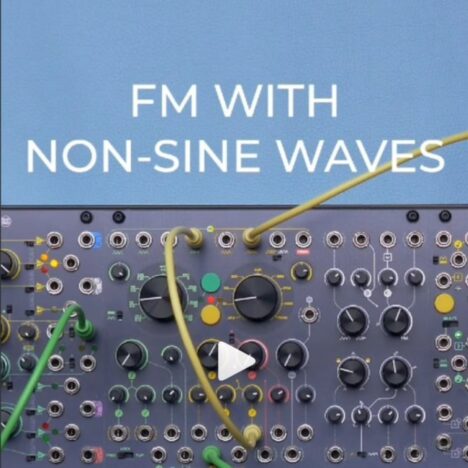- EURORACK
- CUNSA – Sound Seasoning
- CGM – Creative Mixer Series
- BRENSO – Entangled Sound Sources
- USTA – The Voltage Score
- FALISTRI – Movement Manager
- SAPÈL – Tamed Random Source
- FUMANA – Dual 16 Bands Spectral Editor
- 321 – Scale + Flip + Shift + Combine
- 333 – ProAudio Sum & Distribution
- SILTA 2016 – discontinued
- SEI – trunk lines – discontinued
- UNO – foldable case
- PLUS – modular modular case
- ACCESSORIES
- KNOBS
- 500 SERIES
- RESOURCES
- RESELLERS
- ABOUT
- ACCOUNT
Category / techniques
-
BRENSO’S Fake VCA
If we run out of VCAs (and we do…) we like to push BRENSO a little bit further and use its red section! By using all the four quadrants and a unipolar envelope, we can obtain quite a realistic VCA (even if it’s technically a four-quadrant multiplier).
2021-11-16 -
Snappppy Expo FM
Let’s get some clicky percussive sounds through BRENSO’s exponential FM input – it’s DC coupled, so we can patch envelopes to it!
2021-11-16 -
USTA Multitempo #1
This is a patch that could play for HOURS! USTA’s four tracks can play at different BPM values, and sometimes it can be really nice to shift everything by one BPM only.
2021-11-16 -
Unbalanced Wavefolding
Today we played with the Symmetry parameter of BRENSO’s wavefolder section!
2021-11-16 -
FM With Non-Sine Waves
BRENSO’s Through-Zero FM circuit is built on semi-normalizations, but we can break them at any time and combine FM with waveshapers and wavefolders. Here’s a brief example!
2021-11-16 -
Amplitude Modulation #2
Another use of #BRENSO’s red section! Patch any CV to its input and use it as a sort of VCA (just like FALISTRI’s four-quadrant multiplier).
2021-11-16 -
Reverb Feedback #2
Ok, this is a little risky… Instead of using the group FX section, try to patch the FX return to another channel, and then play with this channel’s FX send. You’ll create a very dangerous feedback loop that can also provide some gentle overtones! If you have a QSC, you can even achieve this without a group by using its internal FX mono output.
2021-11-16 -
Safe Solo
By linking more channels, you can “safely” arrange a section to solo through the solo-in-place switches or buttons, then use the Safe Solo switch on the group modules to put that into practice. You can also think of it as a multi-mute tool!
2021-09-07 -
Pan/Crossfade #2
The first and last channels of the QSC feature a voltage-controllable panpot, just like the C channel. However, by combining this feature with the pan/crossfade switch, you can obtain a voltage-controlled crossfader! In this patch, we demonstrate both behaviors with the same CV, a bipolar LFO coming from FALISTRI’s green generator.
2021-09-07 -
Fake Analog And
By patching unipolar gates such as the two EOFs to FALISTRI’s four-quadrant multiplier, it outputs a gate-high signal only when both its inputs are high. It can be very useful in non-standard rhythmic patches!
2021-09-07
Categories
Recent Posts
- CUNSA v/s FUMANA: The same patch on two different filters!
- Subharmonic formant arpeggios patch breakdown: a classic Falistri patch!
- Memes aside, let’s make Sandstorm by Darude on our Frap Tools system
- Four tips to use CUNSA as a sound source (including ringing and additive synthesis)
- ‘Glass sounds‘ analog through-zero FM patch breakdown with Brenso and Cunsa!









